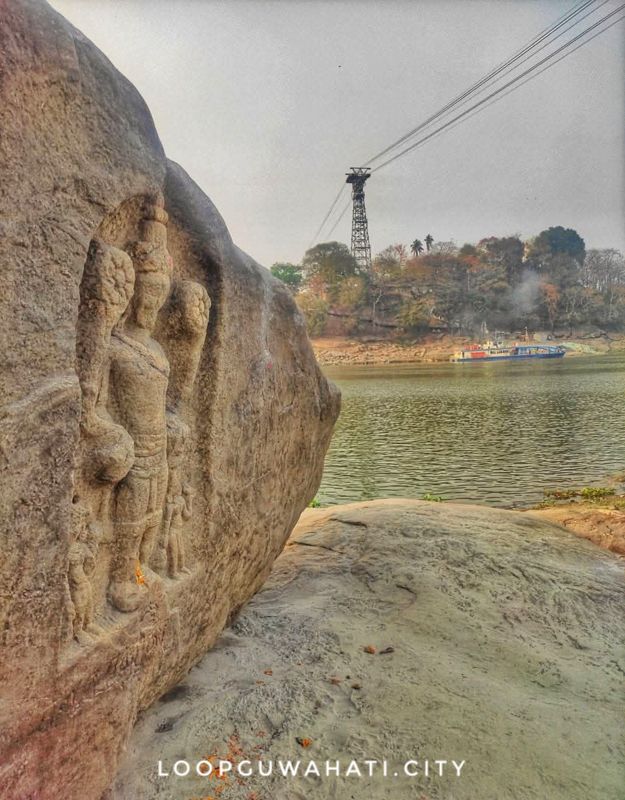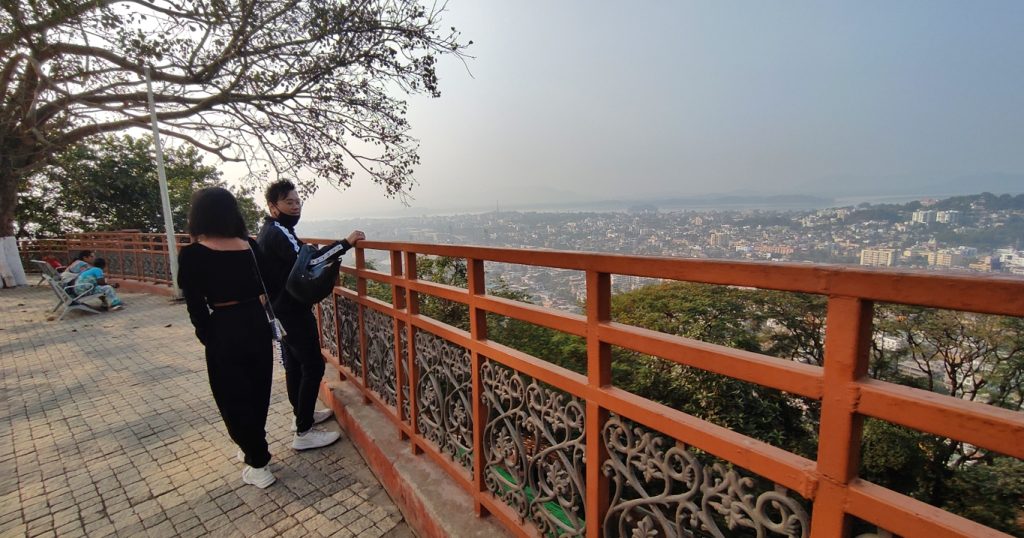What to do in Guwahati?
This question is troublesome for genuine travel writers because, officially, there has never been a comprehensive attempt to list and promote all the points of interest. There are 2-3 things that everyone knows and every commercial website reproduces without any understanding of the city. The situation is sad because even a lot of people living in Guwahati do not know about many interesting things to do in the city.
The Most Mainstream Things to Do in Guwahati
Seek the Blessings of the Mother Goddess Kamakhya
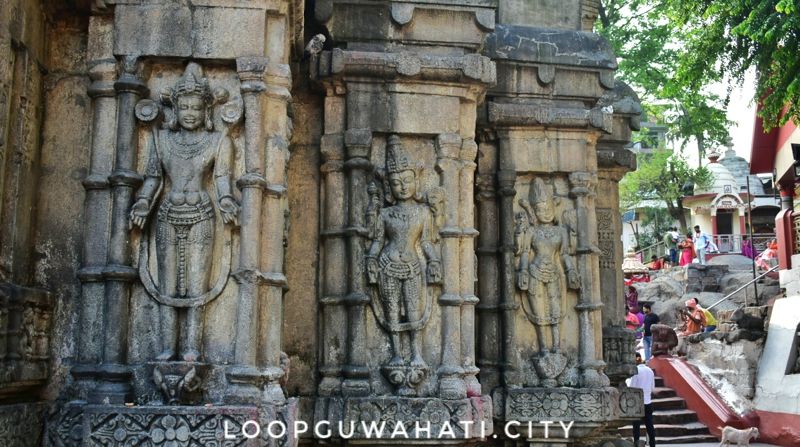
The Kamakhya Temple is a Shaktipeeth and is the most famous landmark here that even the least informed visitor must have heard of. However, many people don’t know that there are several other temples on the same hill. If you are visiting as a tourist, you can visit anytime, by finding a cab or a bus. However, if you are a serious devotee and want to offer puja, remember that you will have to go early in the morning and endure a long queue.
Walk Along the Mighty Brahmaputra
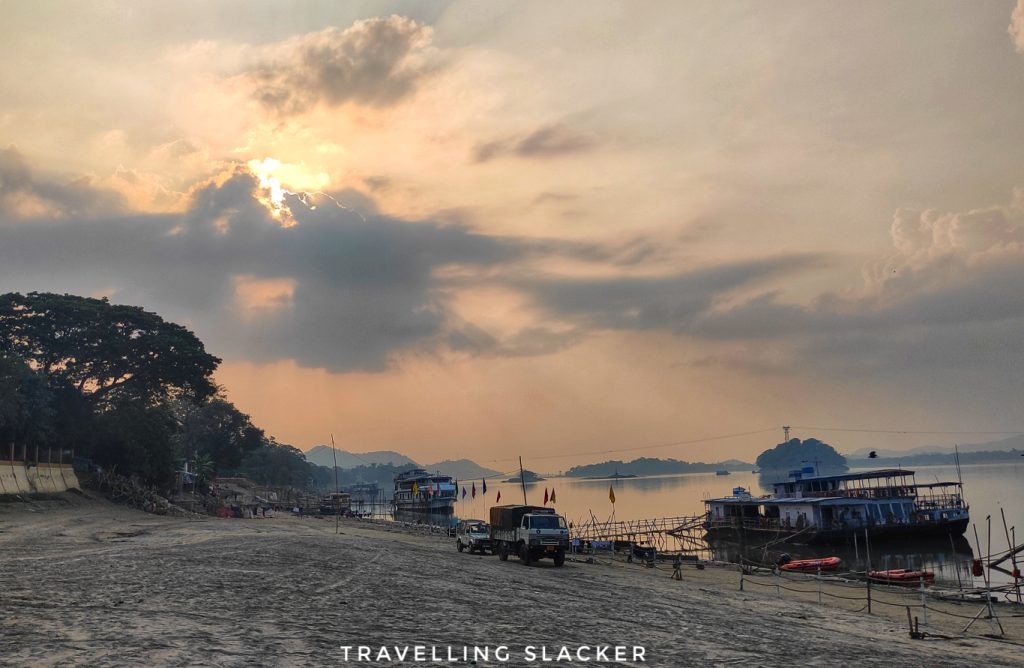
Guwahati is located on the banks of the Brahmaputra, and a lot of first-time visitors ask how and where to experience the river. You need to choose your spots carefully to do the same, and also, you should note that a lot of infrastructure work is going on right now on the banks to develop the riverfront, thus making some parts of the bank inaccessible. However, they promise to be better once the constructions are completed (we will update this post when that happens).
The best way to start the Brahmaputra walk is to reach the locality of Uzanbazar. If you simply walk from Uzanbazar to Bharalumukh along the bank of the river Brahmaputra, you will not only come across several major attractions of Guwahati. This area is full of colonial-era Assam-type houses and several major landmarks. The Assam State Museum is nearby, and so is the planetarium. The boats leave from here to the other side and also to Umananda, the temple island in the middle of the river. Many major education and administrative institutions are located in this area too, such as the iconic Cotton College (the oldest college in the region), Dighali Pukhuri (man-made lake with boating facilities, which was once a naval dockyard connected to Brahmaputra), and the Guwahati High Court. It will be better if you can find someone to take you around and tell obscure stories about the forgotten history of the city.
In the winter, an additional attraction comes up here. As the water recedes, the submerged rock of Urvashi with the remains of an ancient temple becomes visible for a few months. The newly inaugurated Brahmaputra Ropeway is also located on this stretch. It takes you to the other end of the river, i.e North Guwahati, in a matter of minutes. You get a nice aerial view of the city and the river from the ropeway and can also explore the northern bank and return later through the same. The newly minted Mahabahu River Heritage Center and the nearby Park should offer great points for photographing the Brahmaputra.
Guwahati Temple Trail
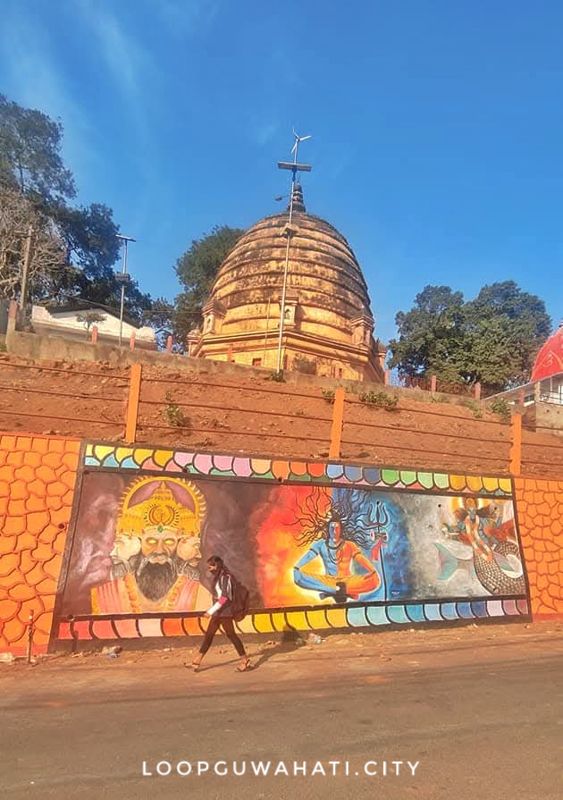
Guwahati, in a way, can be called the city of temples. The Nilachal Hill, where the Kamakhya Temple is located, has several other temples. There are many other unique temples with interesting stories related to them, such as Navagraha, Ugratara, Basistha, Umananda (Island), etc. Also, there are more temples in North Guwahati, such as Ashwaklanta and Dirgheswari, and also the ones located in the middle of the river (mentioned already in the previous section). All these are ancient temples with historical and spiritual significance. So, if you are spiritually inclined, you can spare some time for the temples.
For Families: Something for Everyone
Museums, Zoo, Planetarium, & Cultural Centers
If you are with family and kids, it is always good to mix sightseeing with some learning. Kids always enjoy a visit to the Guwahati Zoo, while museums such as the Assam State Museum and the Science Museum can be intriguing for adults too. You can also visit the Srimanta Sankardev Kalakshetra, a cultural institution named after the medieval saint, polymath, poet, playwright, artist, and social-religious reformer Srimanta Sankardev. It includes a cultural museum, library and various facilities for preserving, demonstrating and performing cultural items, besides a children’s park.
Parks and Activities
Guwahati offers many parks and amusement spots that cater to both relaxation and recreation. Nehru Park, with its well-maintained gardens, walking paths, and cultural sculptures, is a serene escape in the heart of the city. Shraddhanjali Kanan, located along Zoo Road, is another popular green space known for its musical fountain and vibrant atmosphere. Dighali Pukhuri, a historic man-made lake surrounded by a park, offers boating facilities and a peaceful environment perfect for evening strolls. For those seeking scenic views. There are multiple Amusement Parks that feature a range of thrilling rides, water activities, and family-friendly entertainment. Whether you’re looking to unwind or enjoy a fun outing, Guwahati’s parks and amusement venues offer a little something for everyone.
Gastronomic Delights
In Guwahati, tourists can savor a rich tapestry of local Assamese cuisine. Assamese dishes often feature simple, fresh ingredients with unique flavors that are different from usual Indian cuisine. Rice is a staple, often paired with fish or pork, although vegetarian options are available too. Additionally, there are foods belonging to different communities of Assam and Northeast in General and many of them have started dedicated restaurants. You can easily spot a Bodo Kitchen, a Naga Kitchen, a Manipuri Rice Hotel, or a Mishing Kitchen and many more if you just explore the city enough. This is not to say that the city doesn’t have other options. There are scores of joints offering usual Indian food as well as international cuisines. Chinese restaurants have existed here for decades but Korean Restaurants have come up in the recent years.
Shopping Escapades
This is the tricky part. Most people will name areas like Fancy Bazar and Paltan Bazar, which are extremely congested commercial districts and not easy places to navigate for tourists. On the other hand, most of the new malls are located along the GS Road in the middle of the city. You need to know where to go and, more importantly, you need to know what to buy in Guwahati. We will gradually create more comprehensive shopping guides.
For Eclectic Travellers: Of Wars & Antiquity
Colonial Nostalgia
A lot of new-age cafes and eateries have now come up in this area nowadays, fusing heritage with modernity. Some other interesting attractions here include the WWII Cemetery near Silpukhuri (maintained by the Commonwealth War Graves Commission), Northbrook Gate near Bharalumukh (built to commemorate the arrival of a British Viceroy), or the aforementioned River Heritage Center, which is actually a renovated COlonial era building.
Archaeological and Cultural Detours
There are many major archaeological sites and important spots in the 50-100 KMs radius of Guwahati that you can visit depending on your interest. These include the Madan Kamdev Temple near Baihata, the Hayagriva Madhav Temple and Poa Mecca at Hajo, the mysterious Sri Surya Hill near Goalpara, and the weaver’s village of Sualkuchi known as the center of Assam’s traditional Silk Trade.
Minor Hikes: Major Viewpoints in Guwahati
Guwahati has a unique topography. It is not a hill station, it is a congested city on a riverbank. Yet, small hillocks are dotting the city which add another dimension to it. These hillocks offer several great viewpoints of the city where you can get a great aerial view of the sprawling city as well as the Brahmaputra and also catch good sunsets. The main viewpoints here are Gandhi Mandap (Sarania Hill), Bhuvaneswari Temple (Near Kamakhya, Nilachal Hill), Narakasur Hill, also called GMCH Hill, and the aforementioned Navagraha Temple.
Natural and Wildlife Detours
There are many natural escapes in the peripheries of Guwahati including lakes, reserve forests, and small hills. The Garbhanga Wildlife Sanctuary is located on the southern edge of the city. Some local operators organize nature walks/hikes here, especially on weekends. It’s also a good bird-watching spot. Deepor Beel is a lake a few KMs away from Guwahati. It’s known for it’s bird population but increasing encroachments has somewhat ruined its charm. But you can go a bit further to Chandubi Lake, which is a far better nature escape to enjoy unadulterated nature, small hikes, boat rides, and rural life. Nowadays there are good campsites and homestays here. Read my detailed Chandubi post here.
There are various areas within 20-30 KM range of Guwahati such as Sonapur, Chandrapur, Hahim, Rani etc with many small riverside spots or waterfalls that locals use for quick escape and picnics. You can enjoy them too if you have time but you’ll need local people who know the area. If you want to go a bit further, visit Pobitora National Park (50 KMs), known for its thick population of rhinos. It’s a great way to spot rhinos in the wild if you don’t have time to go all the way to the more famous Kaziranga National Park.
Local Hangouts, Eateries, Nightlife
Just like any modern city, Guwahati also has an array of big shopping malls, pubs, cafes, lounges, and nightclubs. Most of them are located along the aforementioned GS Road and Zoo Road (check the map again).
While eating out, you can always look for restaurants that offer local food as well as cuisine from neighboring NE states.
In case you are more comfortable with familiarity and want to play it safe, you’ll also find outlets of major chains such as Starbucks, KFC, Pizza Hut, McD and Domino’s etc. I’ll try to make a list of useful eateries and hangouts soon.

